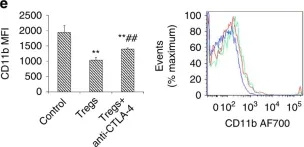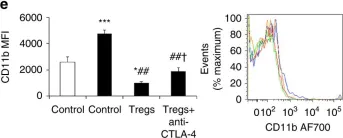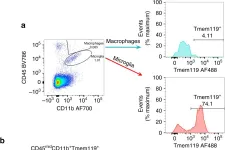Achieving a cure is an urgent need for patients with advanced solid tumors. Here, we discover that oncolytic virus (OV) infection enhances IL-18 receptor expression but fails to increase IL-18 ligand expression. Therefore, we engineer armed oncolytic alphavirus M1 expressing wild-type IL-18 (wtIL-18) or a mutant variant (mutIL-18) that evades IL-18 binding protein (IL-18BP) while maintaining IL-18 receptor (IL-18R) binding. Intravenous administration of M1-mutIL-18 suppresses the growth of multiple advanced solid tumors in C57BL/6 and BALB/c mouse models and promotes long-term systemic immune memory. Mechanistically, armed M1-mutIL-18 enhances directed clonal expansion and differentiation of CD8+ T cells and sustains IFN-γ production. Thus, armed M1-mutIL-18 promotes dendritic cell (DC) activation, priming and activation of CD8+ T cells in lymphatic organs, and infiltration of IL-18R+ CD8+ T cells in the tumor microenvironment, establishing a positive feedback loop. We further show that a PD-L1 inhibitor enhances the anti-tumor efficacy of mutIL-18 OVs. These results highlight the importance of the IL-18 pathway in oncolytic virus therapy and implicate reprogramming ligand-receptor interaction as an effective strategy for immunotherapy.
© 2025. The Author(s).
Product Citations: 49
In Nature Communications on 3 July 2025 by Fan, Z., Liu, Y., et al.
In Cell Reports on 23 April 2024 by Houbaert, D., Nikolakopoulos, A. P., et al.
Lymphatic endothelial cells (LECs) of the lymph node (LN) parenchyma orchestrate leukocyte trafficking and peripheral T cell dynamics. T cell responses to immunotherapy largely rely on peripheral T cell recruitment in tumors. Yet, a systematic and molecular understanding of how LECs within the LNs control T cell dynamics under steady-state and tumor-bearing conditions is lacking. Intravital imaging combined with immune phenotyping shows that LEC-specific deletion of the essential autophagy gene Atg5 alters intranodal positioning of lymphocytes and accrues their persistence in the LNs by increasing the availability of the main egress signal sphingosine-1-phosphate. Single-cell RNA sequencing of tumor-draining LNs shows that loss of ATG5 remodels niche-specific LEC phenotypes involved in molecular pathways regulating lymphocyte trafficking and LEC-T cell interactions. Functionally, loss of LEC autophagy prevents recruitment of tumor-infiltrating T and natural killer cells and abrogates response to immunotherapy. Thus, an LEC-autophagy program boosts immune-checkpoint responses by guiding systemic T cell dynamics.
Copyright © 2024 The Authors. Published by Elsevier Inc. All rights reserved.
-
Cell Biology
-
Immunology and Microbiology
In Cell Reports on 26 December 2023 by Miyauchi, S., Arimoto, K. I., et al.
Tumor-associated myeloid cells modulate the tumor microenvironment and affect tumor progression. Type I interferon (IFN-I) has multiple effects on tumors and immune response, and ubiquitin-specific peptidase 18 (USP18) functions as a negative regulator of IFN-I signal transduction. This study aims to examine the function of IFN-I in myeloid cells during tumor progression. Here, we show that deletion of USP18 in myeloid cells suppresses tumor progression. Enhanced IFN-I signaling and blocked USP18 expression prompt downregulation of colony stimulating factor 1 receptor (CSF1R) and polarization of tumor-associated macrophages toward pro-inflammatory phenotypes. Further in vitro experiments reveal that downregulation of CSF1R is mediated by ubiquitin-proteasome degradation via E3 ligase neural precursor cell-expressed, developmentaly downregulated 4 (NEDD4) and the IFN-induced increase in ubiquitin E2 ubiquitin-conjugating enzyme H5. USP18 impairs ubiquitination and subsequent degradation of CSF1R by interrupting NEDD4 binding to CSF1R. These results reveal a previously unappreciated role of IFN-I in macrophage polarization by regulating CSF1R via USP18 and suggest targeting USP18 in myeloid-lineage cells as an effective strategy for IFN-based therapies.
Copyright © 2023 The Author(s). Published by Elsevier Inc. All rights reserved.
-
FC/FACS
-
Mus musculus (House mouse)
-
Cancer Research
Inhibition of tyrosine kinase Fgr prevents radiation-induced pulmonary fibrosis (RIPF).
In Cell Death Discovery on 17 July 2023 by Mukherjee, A., Epperly, M. W., et al.
Cellular senescence is involved in the development of pulmonary fibrosis as well as in lung tissue repair and regeneration. Therefore, a strategy of removal of senescent cells by senolytic drugs may not produce the desired therapeutic result. Previously we reported that tyrosine kinase Fgr is upregulated in ionizing irradiation-induced senescent cells. Inhibition of Fgr reduces the production of profibrotic proteins by radiation-induced senescent cells in vitro; however, a mechanistic relationship between senescent cells and radiation-induced pulmonary fibrosis (RIPF) has not been established. We now report that senescent cells from the lungs of mice with RIPF, release profibrotic proteins for target cells and secrete chemotactic proteins for marrow cells. The Fgr inhibitor TL02-59, reduces this release of profibrotic chemokines from the lungs of RIPF mice, without reducing numbers of senescent cells. In vitro studies demonstrated that TL02-59 abrogates the upregulation of profibrotic genes in target cells in transwell cultures. Also, protein arrays using lung fibroblasts demonstrated that TL02-59 inhibits the production of chemokines involved in the migration of macrophages to the lung. In thoracic-irradiated mice, TL02-59 prevents RIPF, significantly reduces levels of expression of fibrotic gene products, and significantly reduces the recruitment of CD11b+ macrophages to the lungs. Bronchoalveolar lavage (BAL) cells from RIPF mice show increased Fgr and other senescent cell markers including p16. In human idiopathic pulmonary fibrosis (IPF) and in RIPF, Fgr, and other senescent cell biomarkers are increased. In both mouse and human RIPF, there is an accumulation of Fgr-positive proinflammatory CD11b+ macrophages in the lungs. Thus, elevated levels of Fgr in lung senescent cells upregulate profibrotic gene products, and chemokines that might be responsible for macrophage infiltration into lungs. The detection of Fgr in senescent cells that are obtained from BAL during the development of RIPF may help predict the onset and facilitate the delivery of medical countermeasures.
© 2023. The Author(s).
-
IHC
-
Cardiovascular biology
In Cell Reports on 27 June 2023 by Ramirez-Valdez, R. A., Baharom, F., et al.
Therapeutic neoantigen cancer vaccines have limited clinical efficacy to date. Here, we identify a heterologous prime-boost vaccination strategy using a self-assembling peptide nanoparticle TLR-7/8 agonist (SNP) vaccine prime and a chimp adenovirus (ChAdOx1) vaccine boost that elicits potent CD8 T cells and tumor regression. ChAdOx1 administered intravenously (i.v.) had 4-fold higher antigen-specific CD8 T cell responses than mice boosted by the intramuscular (i.m.) route. In the therapeutic MC38 tumor model, i.v. heterologous prime-boost vaccination enhances regression compared with ChAdOx1 alone. Remarkably, i.v. boosting with a ChAdOx1 vector encoding an irrelevant antigen also mediates tumor regression, which is dependent on type I IFN signaling. Single-cell RNA sequencing of the tumor myeloid compartment shows that i.v. ChAdOx1 reduces the frequency of immunosuppressive Chil3 monocytes and activates cross-presenting type 1 conventional dendritic cells (cDC1s). The dual effect of i.v. ChAdOx1 vaccination enhancing CD8 T cells and modulating the TME represents a translatable paradigm for enhancing anti-tumor immunity in humans.
Published by Elsevier Inc.
-
Cancer Research
-
Immunology and Microbiology
In Nat Commun on 29 September 2017 by Deliyanti, D., Talia, D. M., et al.
Fig.8.E

-
FC/FACS
-
Mus musculus (House mouse)
Collected and cropped from Nat Commun by CiteAb, provided under a CC-BY license
Image 1 of 3
In Nat Commun on 29 September 2017 by Deliyanti, D., Talia, D. M., et al.
Fig.7.E

-
FC/FACS
-
Mus musculus (House mouse)
Collected and cropped from Nat Commun by CiteAb, provided under a CC-BY license
Image 1 of 3
In Nat Commun on 29 September 2017 by Deliyanti, D., Talia, D. M., et al.
Fig.5.A

-
FC/FACS
-
Mus musculus (House mouse)
Collected and cropped from Nat Commun by CiteAb, provided under a CC-BY license
Image 1 of 3


